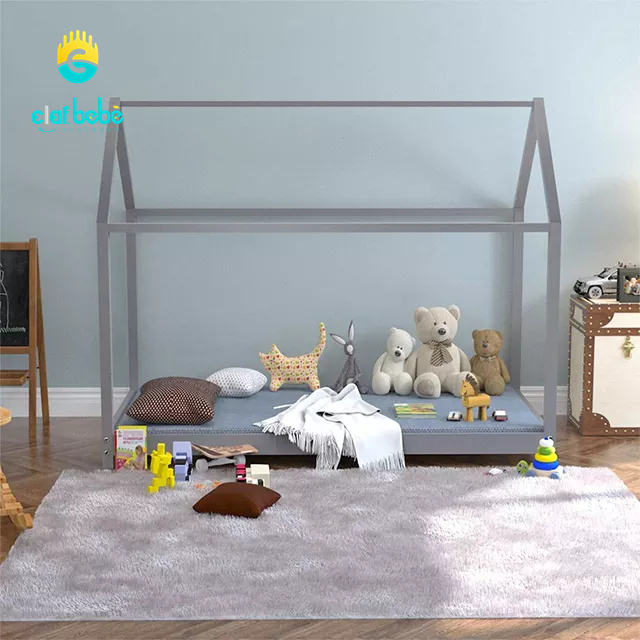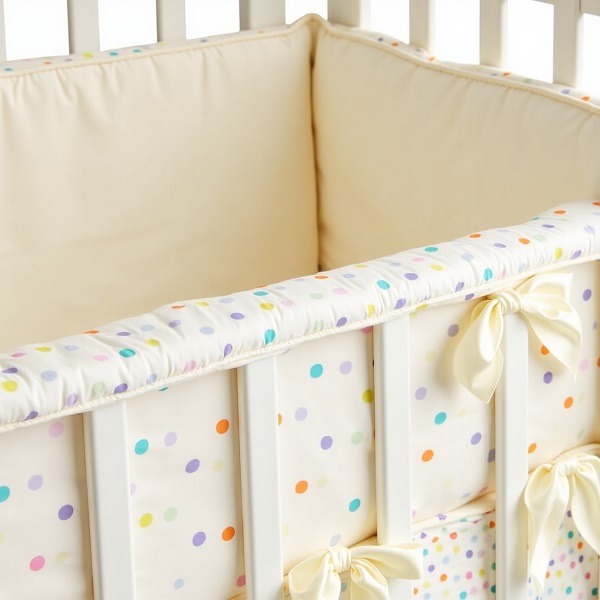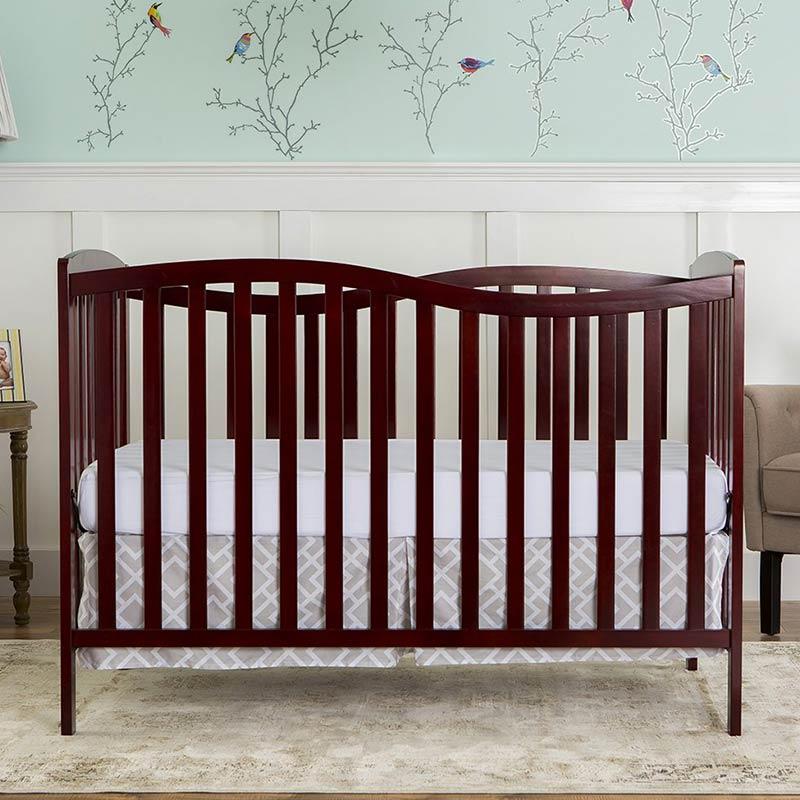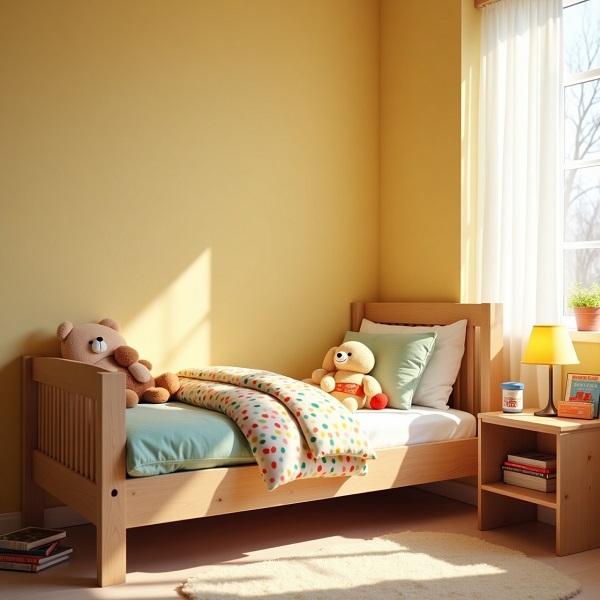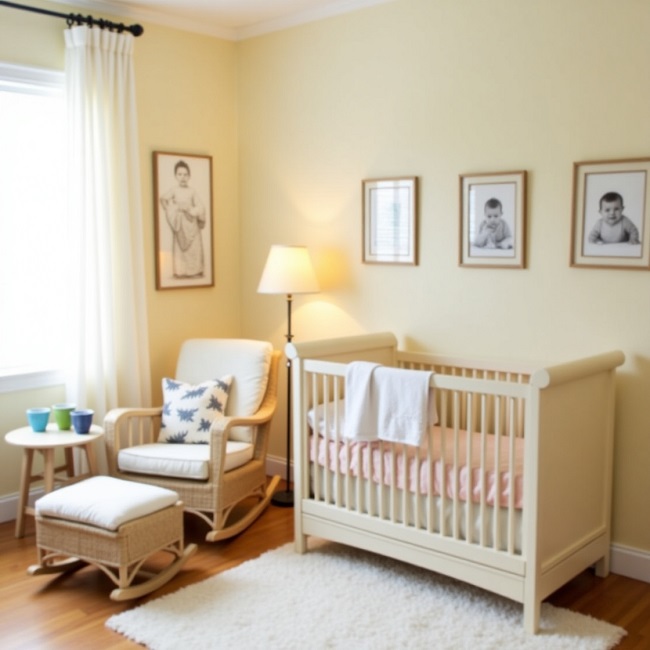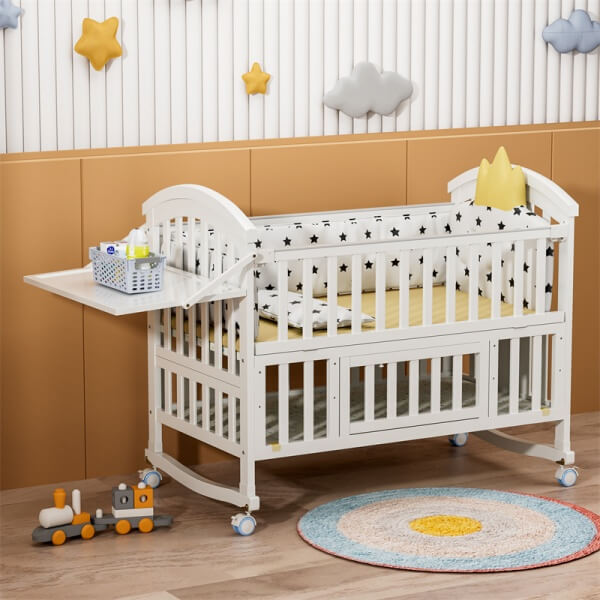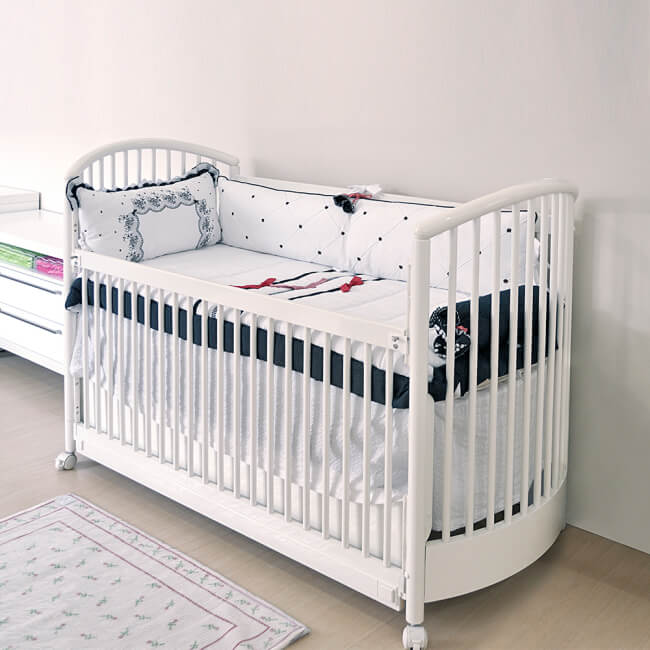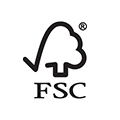The Montessori method has long been a revered educational philosophy, emphasizing independence, respect for a child’s natural psychological development, and freedom within limits. But how does this approach translate to something as seemingly simple as a child’s bed?
Parents and caregivers often wonder about the safety and practicality of Montessori beds. In this comprehensive exploration, we delve into every aspect of Montessori beds, from their design elements to common questions and concerns, helping you make an informed decision.
Features and Design Elements of Montessori Beds
Montessori beds often have a minimalistic design, lacking the bars and high sides of conventional cribs, and are accessible from all sides. This encourages independence as children can get in and out of bed without assistance.
Unlike traditional baby cribs or beds, Montessori beds are typically positioned directly on the floor or very close to it. This low height allows children to easily get in and out of bed independently. Therefore, even if it does not have railings, it will still not cause much harm if the child falls to the ground.
The low height is very friendly to active children, allowing them to explore freely without posing too many safety risks.
The design of Montessori frame beds is also intentional in its simplicity. They are often made from natural materials, like wood, and have a sturdy construction without unnecessary embellishments. This not only makes them durable but also ensures that they are safe, with no small parts or sharp edges that could pose a risk to young children.
Furthermore, the beds may include a fitted mattress that snugly meets the frame, preventing any gaps where a child could get stuck.
They can be found in various shapes, including house bed frames or simple platforms, allowing for personalization and imaginative play.
What Is the Point of a Montessori Bed?
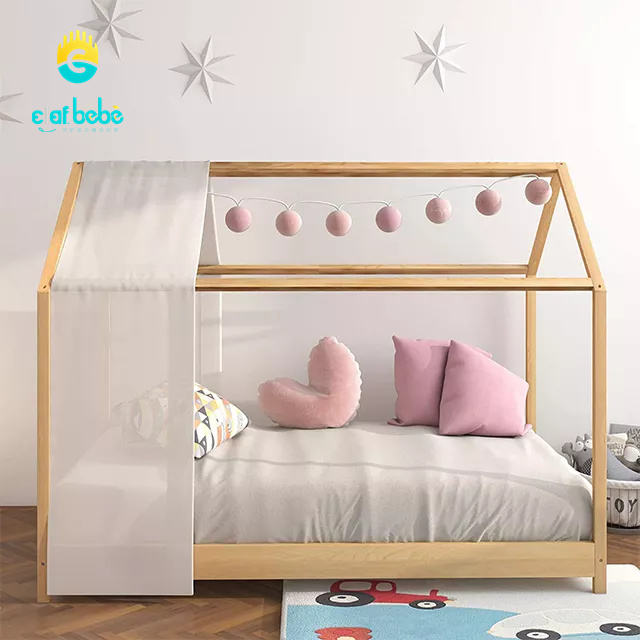
The Montessori bed serves a greater purpose than just being a piece of furniture in a child’s bedroom. It is an embodiment of the Montessori philosophy, which aims to nurture a child’s independence and self-esteem from a very young age. Allowing children the freedom to move in and out of bed on their own encourages them to listen to their bodies’ cues for sleep and wakefulness, promoting self-regulation.
Another key point of a Montessori bed is to respect the child’s size and capabilities. Traditional beds are designed from an adult’s perspective, but Montessori beds consider the child’s perspective and their developmental stage. These beds cater to the child’s small stature and limited motor skills, ensuring that they can use their bed safely and confidently.
Moreover, the Montessori bed encourages a child’s exploration and learning. As children are not confined by bars or high sides, they can engage with their environment immediately upon waking, which supports their natural curiosity and desire to learn. This can lead to a more harmonious daily routine, as children feel empowered and in control of their actions from the moment they wake up.
Potential Risks and Solutions to Montessori Beds
Despite their many benefits, Montessori beds are not without potential risks.
1. Risk of Unsupervised
The accessibility of the bed can mean that very young children might wander around the room unsupervised, potentially leading to accidents.
Solutions: To mitigate this risk, it’s crucial to childproof the entire room, ensuring that all electrical outlets are covered, furniture is anchored to the wall, and small objects that could be choking hazards are out of reach.
2. Risk of Falls
Another concern is that without the physical barriers of a traditional crib, children may roll off the bed while they sleep.
Solutions:
- Create a Safe Sleeping Environment: Ensure that the area around the Montessori bed is free from hazards that could increase the risk of falls, such as sharp corners, clutter, or obstacles.
- Teach Safe Sleep Practices: Educate your child about safe sleep practices, such as staying away from the edges of the bed and avoiding rough play or jumping on the bed. Encourage your child to use the bed responsibly and reinforce the importance of staying safe while sleeping.
- Consider a Floor Mattress: If you’re concerned about the risk of falls from a raised Montessori bed, consider using a floor mattress instead.
- Adjust the Sleeping Area: If necessary, make adjustments to the sleeping area to further reduce the risk of falls. This may include installing padded flooring around the bed or placing soft barriers such as pillows or cushions on the floor to cushion any potential falls.
3. Influence Children’s Sleep Patterns
In addition, some parents worry about the lack of confinement impacting a child’s sleep patterns.
However, the Montessori approach advocates for establishing clear bedtime routines and setting consistent boundaries, which can help children learn when it is time to sleep and when it is time to play.
By adhering to these routines, children can adapt to the freedom of a Montessori bed without it negatively impacting their sleep.
Can Babies Climb out of Montessori Bed?
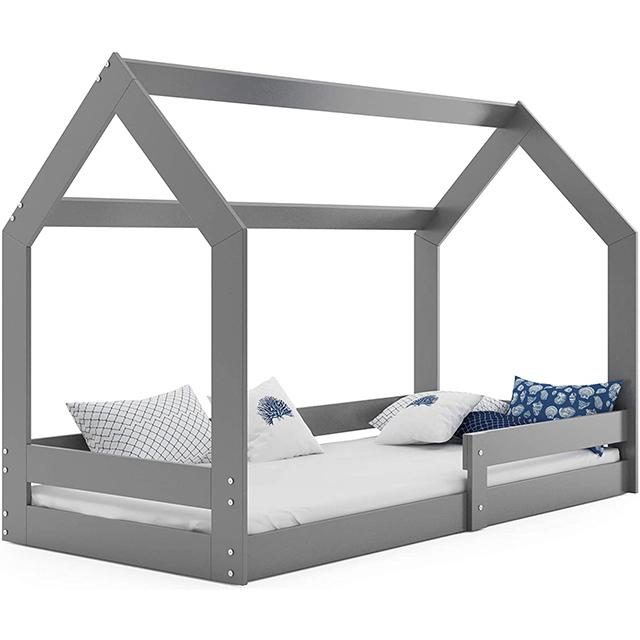
In fact, we do not recommend Montessori beds for babies that are too young. Because babies can easily climb out of a bed without railings, there is a great risk of falling.
Young infants lack the motor skills and awareness to safely navigate a Montessori bed, which typically has a low height and minimal barriers. There is a risk that a very young baby could roll off the bed or become trapped between the mattress and the bed frame.
While babies may start to pull themselves up and stand with support around six to eight months of age, they typically lack the coordination and strength to climb out of a bed independently until later in their development.
While Montessori floor beds offer numerous benefits for young children, they are generally not recommended for babies who are too young and are specifically designed for children who have reached a certain stage of development.
Applicable Ages for Montessori Bed
The Montessori bed is not a one-size-fits-all solution and is most beneficial when introduced at the appropriate age. Typically, It can be used from infancy, once the child is no longer sleeping in a bassinet or co-sleeping arrangement.
The applicable ages for Montessori beds typically start around six months to a year and extend through early childhood. However, there is some flexibility depending on the child’s development and individual circumstances. Here’s a breakdown of the applicable ages:
1. Around 6 to 12 Months
This is generally the lower end of the age range for transitioning to a Montessori bed. Around six months, babies may start to show signs of increased mobility, such as rolling over, sitting up, and pulling themselves up to stand. Some parents choose to transition to a Montessori bed at this stage to promote independence and freedom of movement.
2. Toddlerhood (1 to 3 years)
Toddlers are typically the primary age group for Montessori beds. At this stage, children have developed more advanced motor skills and coordination, making them better suited to navigate a low-to-the-ground sleeping environment independently.
3. Preschool (3 to 6 years)
Many children continue to use Montessori beds through the preschool years. During this time, children may benefit from the continued freedom of movement and independence provided by a Montessori bed. However, some children may outgrow the Montessori bed or prefer a more traditional bed as they get older.
4. Transition to a Traditional Bed
At some point, typically around the age of 5 or 6, children may transition from a Montessori bed to a more traditional bed with a higher frame and possibly a box spring or foundation. This transition often coincides with the child’s growing size and changing sleep needs, as well as their readiness for a bed with a higher elevation.
It’s worth noting that there is no strict age limit for transitioning away from a Montessori bed. Each child’s readiness will vary, and parents should consider their child’s development, personality, and preferences when deciding whether to continue using a Montessori bed or move to a more traditional sleeping arrangement.
How to Help Children Adapt to Sleeping in a Montessori Bed?
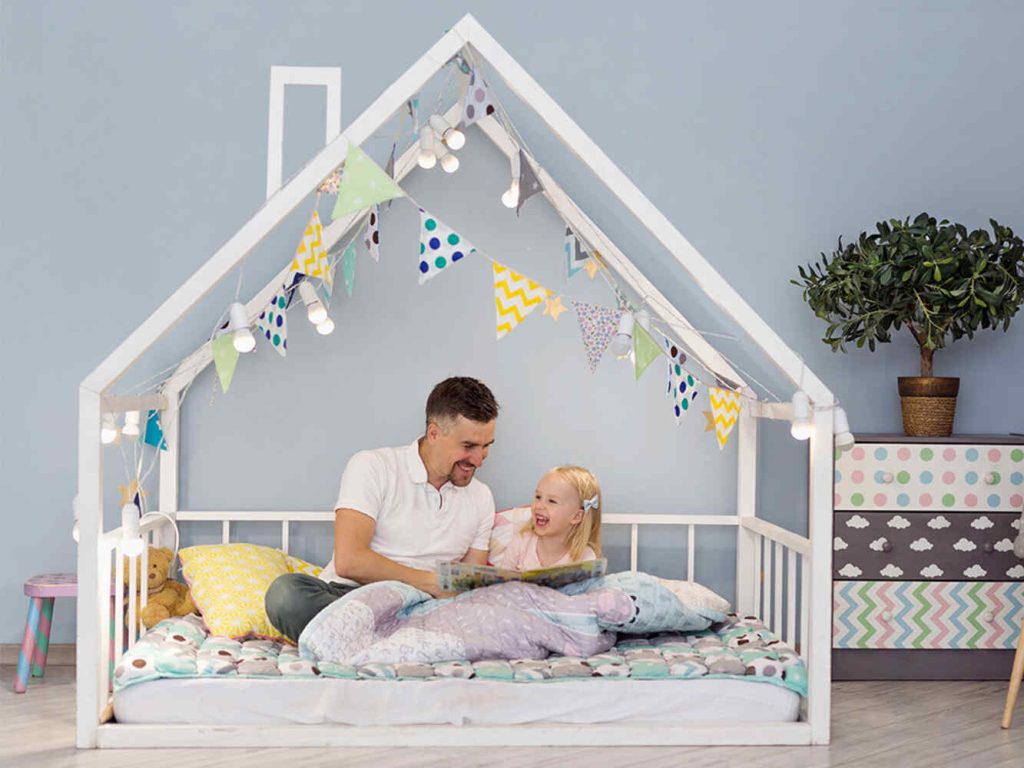
Start by introducing the Montessori bed gradually. Allow your child to become familiar with the bed during playtime or quiet time in their room before expecting them to sleep in it overnight.
Involve your child in the process of transitioning to the Montessori bed. Let them help choose bedding, pillows, and other accessories for their new bed. This can give them a sense of ownership and control over their sleeping environment, making the transition easier.
Establishing a calming bedtime routine can signal to your child that it’s time to wind down and prepare for sleep, regardless of the type of bed they are using.
Offer reassurance and support to your child as they adjust to sleeping in the Montessori bed. Encourage them to express any concerns or fears they may have and validate their feelings. Let them know that you are there to support them and that they are safe in their new bed.
Ensure that the Montessori bed is set up in a comfortable and inviting environment. Choose soft bedding, pillows, and blankets that your child enjoys. Consider adding comforting elements such as a favorite stuffed animal or nightlight to help your child feel secure and relaxed.
Conclusion
In conclusion, Montessori beds can be a safe and beneficial choice for children when implemented with mindfulness to the child’s developmental stage and individual needs. They encourage independence, respect for the child, and a love of learning, all integral aspects of the Montessori philosophy.
FAQ
How Long Can a Child Use a Montessori Bed?
A child can use a Montessori bed for as long as it remains comfortable and meets their needs. Some designs grow with the child and can be used for several years.
Do Montessori Beds Require Special Mattresses?
Montessori twin beds typically use standard-sized mattresses, but it’s important to ensure there are no gaps between the mattress and the bed frame. Mattresses should fit snugly to prevent any risk of entrapment.
Are Montessori Beds Safe for Newborns?
Montessori beds are generally not recommended for newborns. It’s best to wait until the baby is older and has outgrown their bassinet or co-sleeping arrangement before transitioning to a Montessori bed.
Do Montessori Beds Come in Different Sizes?
Yes, Montessori beds are available in various sizes to accommodate different age groups and room sizes. Common sizes include toddler beds, twin beds, and full-size beds, but custom sizes can also be made to fit specific needs.
Do Montessori Beds Require Special Bedding or Accessories?
Montessori beds do not necessarily require special bedding or accessories, but parents may choose bedding and decor that align with Montessori principles, such as natural materials, neutral colors, and minimalist designs. Floor cushions, low shelves, and soft rugs can also complement the Montessori sleeping environment.
Recommended Related Articles:

